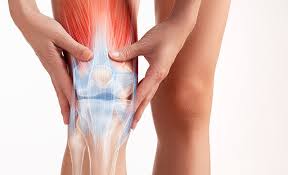Introduction:
Orthopedic surgery encompasses a wide range of procedures aimed at diagnosing, treating, and preventing musculoskeletal conditions and injuries. From joint replacements and fracture repairs to arthroscopic surgeries and sports medicine procedures, orthopedic surgeons play a vital role in restoring function and improving quality of life for patients of all ages. In this blog post, we’ll explore some of the most common procedures performed by orthopedic surgeons and shed light on the conditions they address.
1. Joint Replacement Surgery:
Joint replacement surgery is one of the most common procedures performed by orthopedic surgeons, particularly in older adults with severe arthritis or joint damage. The most common joint replacements include hip replacements, knee replacements, and shoulder replacements. During these procedures, the damaged or diseased joint is removed and replaced with a prosthetic implant made of metal, plastic, or ceramic materials. Joint replacement surgery can significantly reduce pain, improve mobility, and enhance overall quality of life for patients suffering from debilitating joint conditions.
2. Arthroscopic Surgery:
Arthroscopic surgery, also known as minimally invasive or keyhole surgery, is a specialized technique used to diagnose and treat a variety of joint-related problems, including torn ligaments, cartilage injuries, and damaged tendons. During arthroscopic surgery, orthopedic surgeons insert a small camera called an arthroscope into the joint through tiny incisions. This allows them to visualize the internal structures of the joint in real time and perform surgical procedures with precision using small instruments. Arthroscopic surgery offers several advantages over traditional open surgery, including faster recovery times, reduced pain, and smaller scars.
3. Fracture Repair:
Fracture repair is another common orthopedic procedure performed to treat broken bones and restore proper alignment and function. Orthopedic surgeons use a variety of techniques to repair fractures, including closed reduction and casting, open reduction and internal fixation (ORIF), and external fixation. The choice of treatment depends on the location and severity of the fracture, as well as the patient’s age, overall health, and activity level. Fracture repair aims to promote healing, prevent complications such as malunion or nonunion, and restore normal bone strength and function.
4. Sports Medicine Procedures:
Orthopedic surgeons with specialized training in sports medicine perform a variety of procedures to diagnose, treat, and prevent sports-related injuries in athletes of all levels. Common sports medicine procedures include ACL reconstruction, meniscus repair, rotator cuff repair, and shoulder stabilization surgery. These procedures are designed to restore stability, strength, and range of motion to injured joints and tissues, allowing athletes to return to their sports safely and effectively. Sports medicine surgeons often work closely with physical therapists, athletic trainers, and other members of the sports medicine team to optimize recovery and prevent future injuries.
Conclusion:
Orthopedic surgeons are skilled specialists who perform a wide range of procedures to diagnose, treat, and prevent musculoskeletal conditions and injuries. Whether it’s joint replacement surgery, arthroscopic procedures, fracture repair, or sports medicine interventions, orthopedic surgeons play a vital role in helping patients regain mobility, reduce pain, and improve quality of life. If you’re experiencing musculoskeletal issues or injuries, consulting with an orthopedic surgeon can help you explore your treatment options and develop a personalized plan to address your needs.






Comments